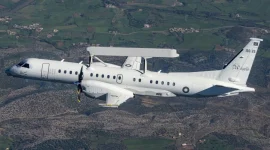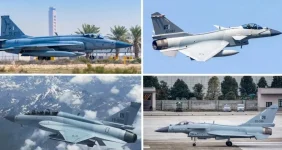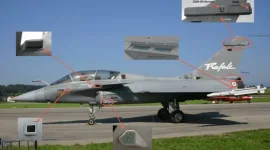- Views: 1K
- Replies: 1
A recent border engagement in May 2025, codenamed Operation Sindoor, has highlighted the critical importance of real-world combat in verifying the capabilities of India's homegrown defence technology.
The successful operation, which saw the Indian Armed Forces effectively counter a significant drone and missile threat, serves as a powerful demonstration of the country's growing self-reliance and a potential turning point for its ambitions as a major global arms exporter.
The Significance of Combat Validation
For India to transition from a major arms importer to a leading manufacturing hub, as envisioned under the Atmanirbhar Bharat initiative, its defence products must earn the trust of international buyers.Industry experts agree that the ultimate seal of approval for military hardware is not factory trials but proven performance in actual combat situations.
Operations like Sindoor provide this crucial validation, showcasing that Indian systems are reliable and effective under the stress of a real-world conflict.
This builds confidence not only within India's own armed forces but also among potential foreign customers who are often hesitant to procure untested equipment.
A Look Inside Operation Sindoor
During Operation Sindoor, in response to the deployment of over 300 hostile swarm drones by Pakistan, including Turkish-made Asisguard Songar models, the Indian Armed Forces deployed a comprehensive array of defence systems.India responded with a multi-layered air defence network that integrated both older, upgraded equipment and modern indigenous systems.
Key Indian technologies demonstrated their capabilities during the engagement:
- Anti-Drone Systems: The Defence Research and Development Organisation's (DRDO) D-4 anti-drone system, a directed energy weapon, successfully neutralised multiple targets.
- Air Defence Missiles: The homegrown Akash Surface-to-Air Missile (SAM) system played a pivotal role in intercepting aerial threats at various altitudes.
- Surveillance and Attack Drones: Indian-made swarm drones were deployed for counter-offensives, while Medium Altitude Long Endurance (MALE) UAVs like the TAPAS-BH-201 provided crucial intelligence and surveillance.
- Legacy Systems: Upgraded L-70 and Zu-23mm anti-aircraft guns proved effective against low-flying drones, demonstrating the success of integrating older assets into a modern command structure.
Competing in the Global Market
The international arms market is highly competitive, with nations like the United States, Russia, and Israel dominating sales largely due to their systems being battle-proven.The export success of Russia's S-400 missile system, Israel's Iron Dome, and the American Patriot system is directly tied to their documented performance in conflicts.
India has already seen success with its BrahMos supersonic cruise missile, which has been combat-tested in exercises and secured an export order from the Philippines. The performance of systems in Operation Sindoor could now boost the export potential of other key platforms.
Products like the Tejas Mk1A fighter jet, the Pinaka multi-barrel rocket launcher, and the Akash air defence system are prime candidates for export to nations in Southeast Asia, the Middle East, and Africa, which are often looking for cost-effective and reliable military hardware.
By proving its technology in real-world scenarios, India can significantly strengthen its position as a credible and competitive global defence supplier.




